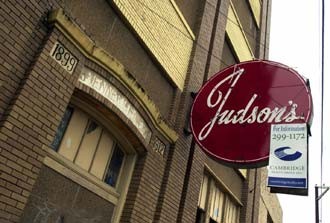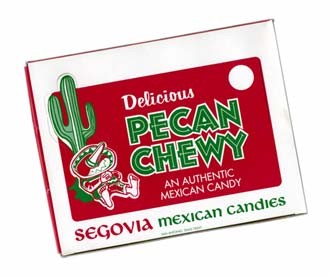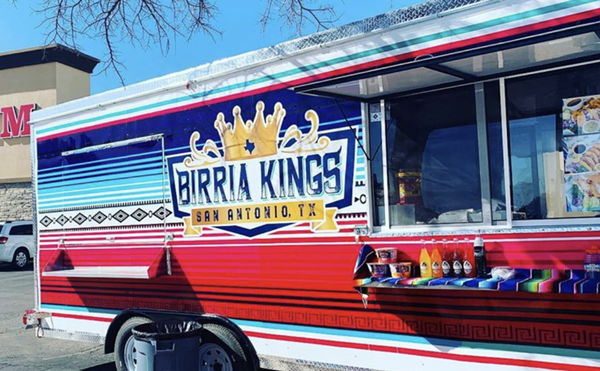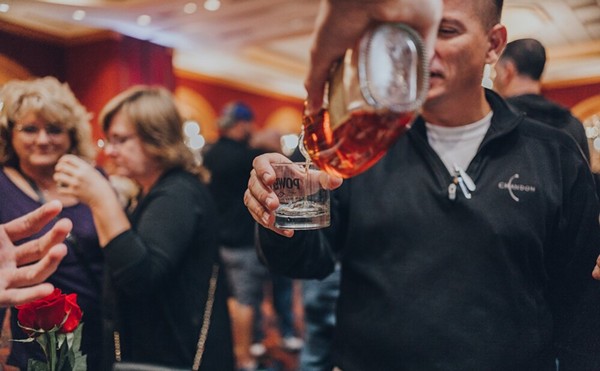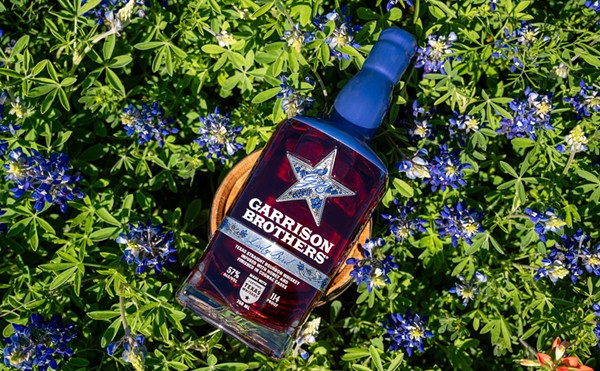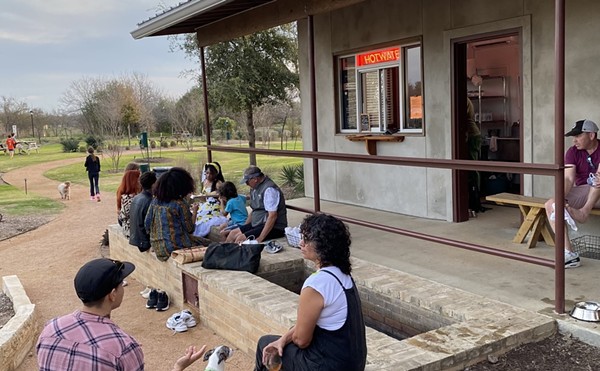|
Judson, Segovia carry on SA's candy tradition The sweet story of San Antonio begins in colonial México with the convents founded by Spanish orders; it was from these sheltered precincts that the arte del dulce spread. The nuns may have been cloistered, but they were not without an appreciation for certain sybaritic pleasures. But even they, with their history of Spanish/Moorish candies and desserts, had to wait until 1525 when, in Veracruz, the conquerors imposed sugar cane upon a native society not at all concerned with things sweet. After that, it was Catarina bar the door. One conventual candy, cocada de monja, is likely the genesis of the coconut candies now available throughout the Alamo City. And from the Convento de Santa Clara (1570) in Mexico City comes dulce de leche quemada: Sherry-spiked, topped with obleas (a host-like wafer), wrapped in papel de China (tissue paper) though it may be, it is surely the mother of all pralines. Pralines are largely responsible for the early development of the city's sweet tooth, and the Segovia family is a living link to that early tradition. "My father came from Aguas Calientes in 1917," recounts Rudy Segovia Sr., and it was only a year later that he established the candy company that still bears his name. "He was making then what we make now," says Segovia, "but it was hard to sell. Baby Ruths were popular and a lot of people were `already` making Mexican candy." Recipes were simpler, he adds - so simple that the basic dulce de leche candies were cheap enough to use for sweetening coffee. Pecans were cheap, too, "about 5 cents a pound," he recalls, a situation that was to last until the fiery Emma Tenayuca organized strikes in 1938, ending the exploitation of Mexican pecan shellers and signaling the beginning of San Antonio's decline as the world leader in pecan production. By the time Segovia's father passed away in 1936, 17-year-old Rudy was already involved in the business, and when he married a year later, his wife helped, too. "We just made candy every now and then," he says. The imposition of sugar rationing during World War II meant that candy production was even more curtailed. "We got an allotment," he remembers, "and when we had saved 300-400 pounds of sugar, we would make candy on the weekends and sell it on Mondays," mostly to grocery stores. America's yen for sweets was reawakened after the war, and San Antonio was no exception. Peanut patties and watermelon slices of tri-color coconut were added to Segovia's basic praline and leche quemada product mix after 1945. A divinity praline, softened with egg white, was developed later, too, but even with added ingredients (the inevitable carrageenan, for example) and products, a current staff of 12, and a website (www.algodulce.com), copper kettles made in Mexico are still the heart of the operation. "We make quite a lot," is as specific as the senior Segovia (his son now mostly runs the show) would get when asked about current production. San Antonio apparently never developed the artisanal tradition of candies of marzapan and sugar paste that Mexico is famous for to this day; at least there's little evidence of it. Nor was there the seasonal variety of candies such as the sugar skulls that continue to be a fixture for Day of the Dead throughout Mexico. But that doesn't mean there wasn't artistry; a trip to Segovia's modest store on Guadalupe Street is ample proof of that. On prominent display are three sugar-sculpted creations: a scale model of San Fernando Cathedral, an even larger replica of the Tower of the Americas made in 1968, and a dove cote "more than 60 years old," according to Rudy Sr. They, too, are links to a traditional past. But it's pralines that are the common bond between Segovia and an even older San Antonio candy-making institution, Judson Candies. Originally founded in 1899 by E.J. Jenner to make peanut brittle and fudge, the Jenner Manufacturing Company continued under that name until 1945. But J.W. Judson had purchased an interest in the company in 1910, and the four Judson brothers, George, Bill, Jack, and Tom, acquired ownership of the firm in 1941 and changed the name to Judson Candies in 1945. Depending upon which accounts you read, the company was famous for its chewy pecan pralines, its jelly beans, or its innovative wrapping of small candies packaged for Halloween. "Under the Judsons, the company flourished as the originator of hard candy sours," stated an article in the San Antonio Business Journal in 1988, suggesting yet another claim to candy fame. The sending of chocolates to troops overseas in WWII likely cemented Judson's reputation as a chocolate maker as well, and the company's chocolate-covered mint patties, no longer made, remain the nostalgic favorite of many locals.
Amy Atkinson Voltz, daughter of Dr. Basil, was involved with the operation from the beginning. "I grew up in the candy business," she says. It's an operation that has changed substantially from Judson's earlier days, however. A tour of the factory floor reveals an entire section, once dedicated to the making of hard candies, shrouded in plastic - again testimony to changing markets and the development of the company into one that now makes about 50 percent of its product and repackages candies from as far away as China and Turkey for the remainder. And if Halloween candy was once a company specialty, Easter confections - including the only chocolate-coated marshmallow bunnies and eggs still made in the U. S. - are now the major seasonal product. Chewy pralines are still big, however, as are jelly beans and salt-water taffy. "We don't like to change flavors very often; you just don't mess with them," admits Voltz, adding, "We're not like Hershey. We move slowly around here and can't afford to take a big hit." Nevertheless, the company's line of tropical fruit sours has expanded, and the Hot-N-Spicy Big Tex jellybeans have simply got to be tried. Super-sized as befits the state and hotter 'n' Hades with its cinnamon kick, this candy takes me right back to a red-hot remembrance of things past. There's admittedly little romantic and nostalgic about the current factory operation at Judson-Atkinson; Willie Wonka's wonder it's not. But there's still some fascination in the giant, computerized machines that press shapes into starch ready to be filled with marshmallow or jelly, in the copper burnishing tumblers looking for all the world like classy concrete mixers, and in the coating vats filled with spongy marshmallow centers awaiting the ladles of confectionery colors. They testify to the art that still remains in the world of mass-produced confections. And at Judson-Atkinson, an even more tangible connection to craftsmanship is in its personnel. Janie Chavez has been with the company since 1946; Julia Rocha, the woman responsible for mixing the colored coatings, since 1956. Elena Campos, Romana Gonzales, Jim Roberts, Joe Cortez, and Edward Granado are also veterans. Socorro Pacheco, with Judson since the '50s, recalls "exquisite packages with all kinds of chocolates" as well as hand-scooped pralines with "big old pecans on top" from 50 years ago. (The development of an automated machine by the original Judson's saved a lot of time, but the look was never quite the same, laments Pacheco.) She also remembers vividly the smells of the old factory. There was no air conditioning at the time, she says, so with the windows open "you could smell all the way out in the parking lot when we made chocolates, butterscotch, and red hots." Keep that image in mind when you next pick up 2-for-$1 bag candies at your local Stop-N-Go. •
|
Tags:

KEEP SA CURRENT!
Since 1986, the SA Current has served as the free, independent voice of San Antonio, and we want to keep it that way.
Becoming an SA Current Supporter for as little as $5 a month allows us to continue offering readers access to our coverage of local news, food, nightlife, events, and culture with no paywalls.
Scroll to read more Flavor articles
Newsletters
Join SA Current Newsletters
Subscribe now to get the latest news delivered right to your inbox.

